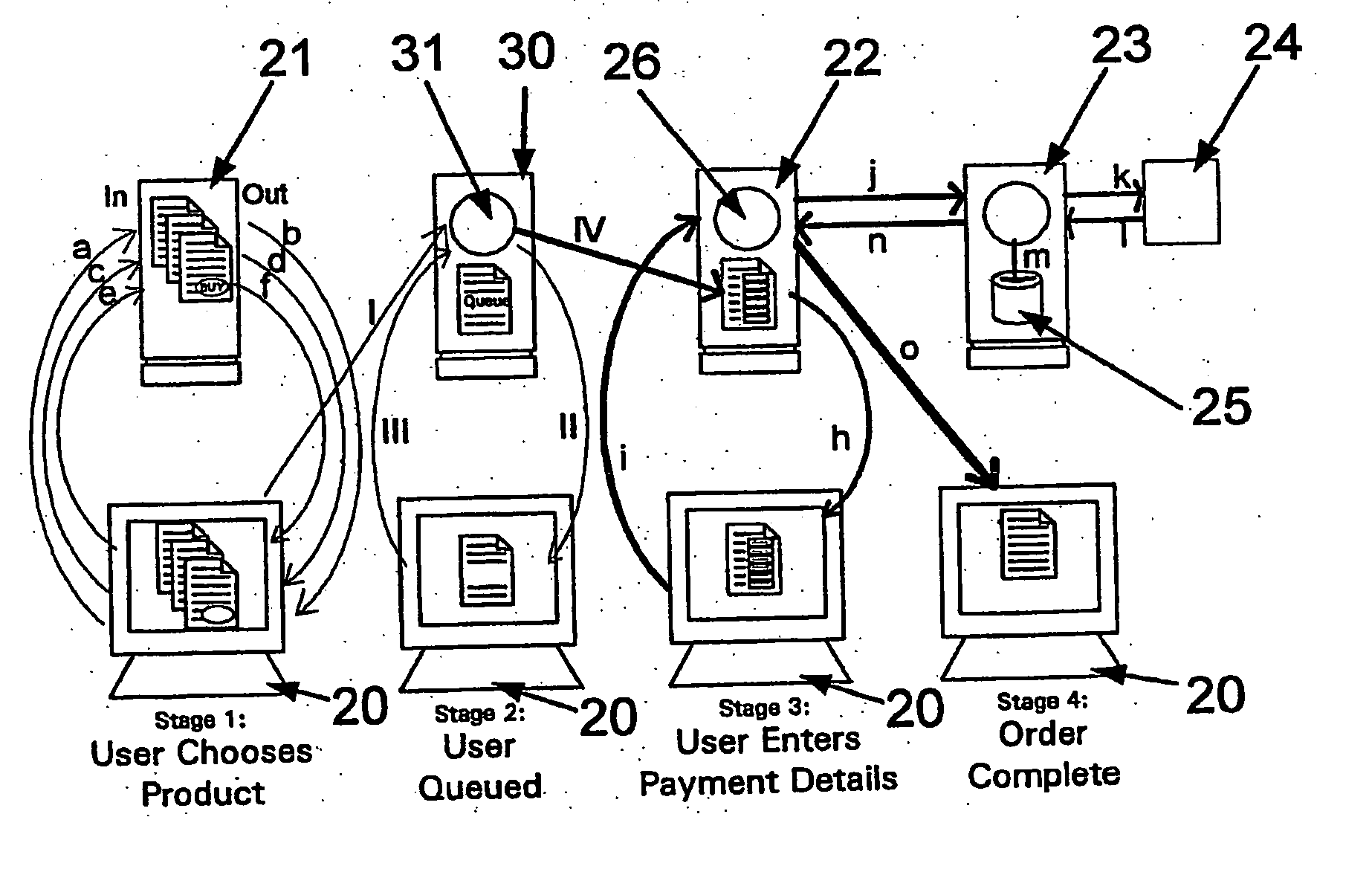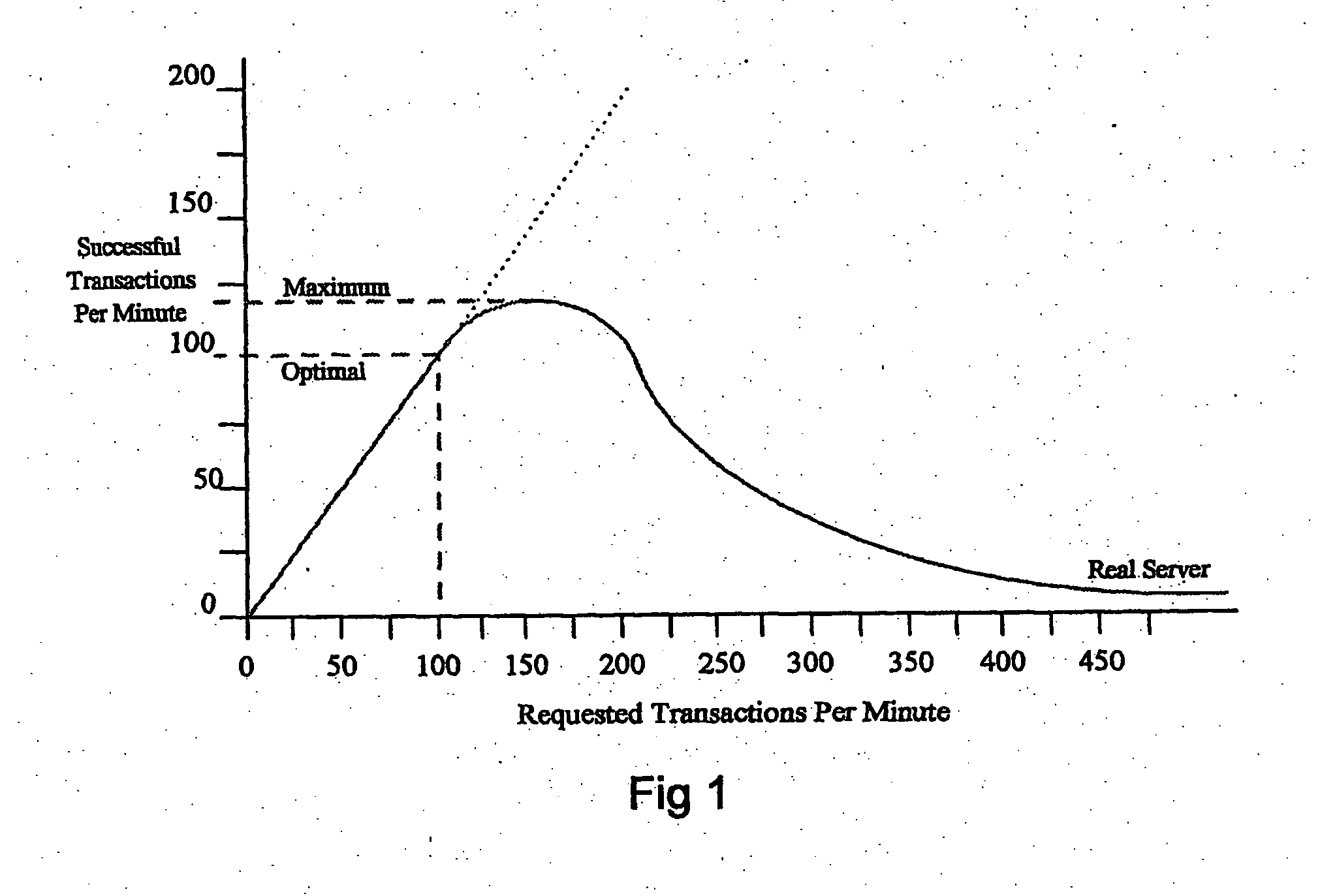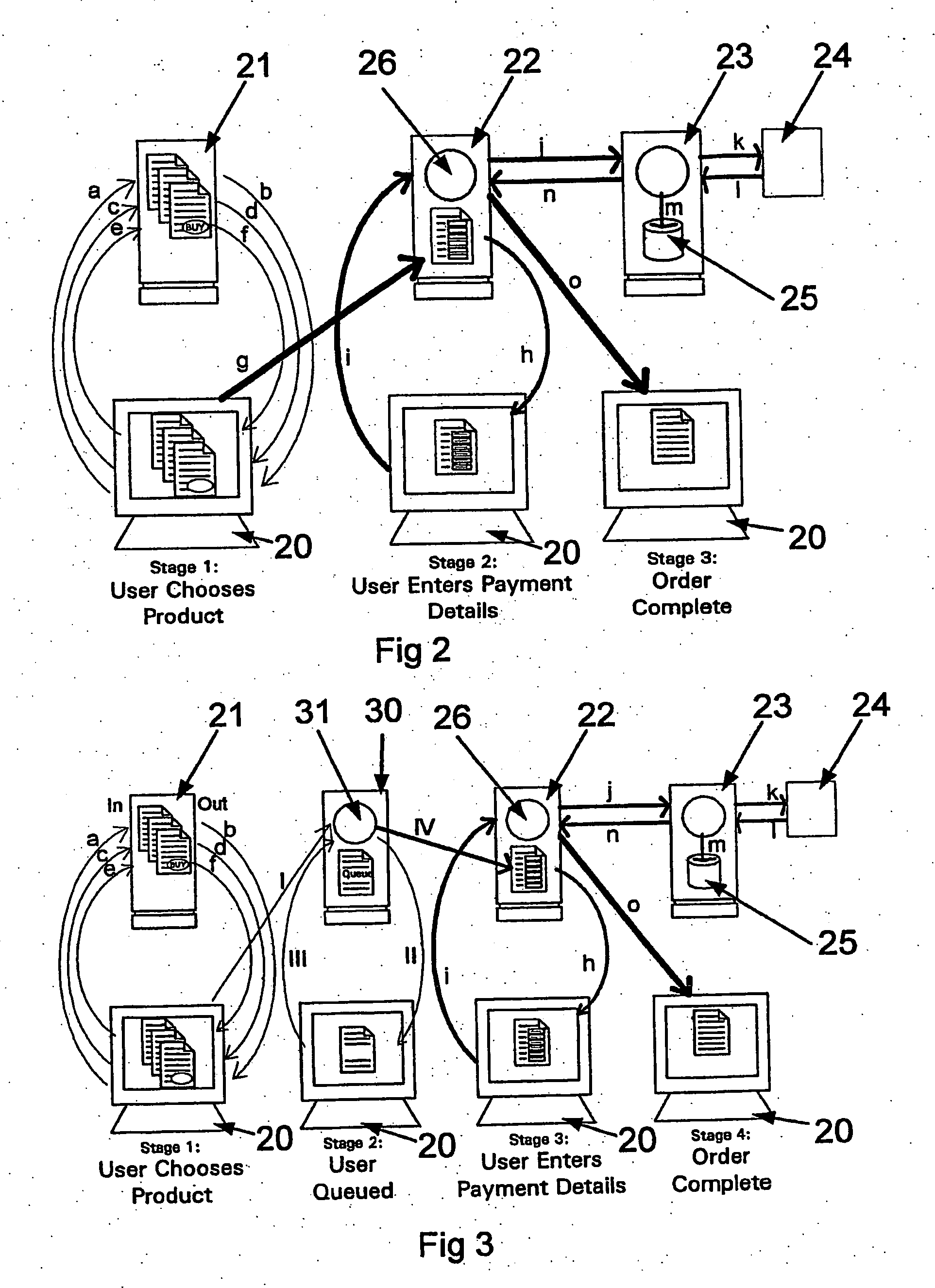Any service provided over a communications network will have limited bandwidth, resulting in a maximum number of customers that can be served per minute.
The bandwidth may be limited for technical reasons, such as
web service speed or the number of incoming phone lines, or may be limited because there are simply not enough operators to
handle the demand for service.
However, when demand is greater than the maximum possible service rate, problems can occur unless a
traffic management system is employed.
Fans, knowing that tickets are limited, will all try to use the
system as soon as the tickets go on sale, creating a demand “spike” that may well be above the maximum transaction rate that the
system can cope with.
The number of users who can successfully complete this path concurrently is limited by the bandwidth of the system, which in turn is limited by the bandwidth of the most resource intensive step.
As requested rates increase beyond this, some transactions will fail, resulting in frustrated users.
Payment gateways may have an optimum transaction rate of about 100 successful transactions per minute, although most
payment gateways are much less efficient than this.
This causes an additional request to be sent to the
payment gateway, which must also be dealt with, further increasing the
server load.
Furthermore, as the
payment gateway fails, users may start to jam up the earlier stages of the e-commerce path, resulting in saturated payment pages (stage 2) and eventually a saturated
web server (stage 1).
This problem is particularly significant if all these stages reside on the same physical
machine.
As stated above, this situation is particularly serious when there is a very high interest in the particular product which is available in limited quantities and goes on sale at a particular time.
Catastrophic failure will last as long as customers continue to submit requests and for popular events can last for many hours.
This creates a number of problems.
Firstly, the experience of buying a product or service is protracted and is extremely frustrating, creating negative publicity for the service providers.
Customers become angry that their time is being wasted.
Secondly, customers perceive that the assignment of successful transactions is random or based on the whims of the
networking hardware, leading to intense dissatisfaction.
Thirdly, the
server load means that attempts to modify the pages to improve the system “
on the fly” may not succeed.
If the
high load has been anticipated, certain checks (such as
credit card authorisation) may be postponed until after the ‘sale’ to increase performance, causing further work and uncertainty as to the number of tickets actually sold.
The
server load means that attempts must be made to increase capacity at an additional cost to the vendor and ultimately to the customer.
A simple but expensive solution to some of these problems is to increase the bandwidth of the most limited part of this system, usually the
payment gateway, by adding additional servers in parallel.
In practice, if the
payment gateway is the
bottleneck for the process, it is in general not possible to scale up its capacity to meet arbitrary demand rates.
Firstly, the bandwidth of the
credit card network is usually limited and secondly, the bandwidth of the
database system that stores the transactions is limited.
Database servers are very expensive to scale and there are often technical reasons why the number of
database servers cannot be increased beyond two.
Whilst adding servers may allow a vendor in practice to double the transaction rate, the actual level of demand for a particular product cannot be accurately predicted and the risk of
catastrophic failure for very high interest sales is not reduced.
All that is achieved is further expense both in hardware and in
staffing costs.
Finally, in real e-commerce, servers more frequently fail for reasons other than excess demand.
Examples include network or power outages, hardware faults, system updates or reboots, and
software errors.
In these cases too, customers are prevented from obtaining offered products and services, frequently being presented with an
error message instead of the desired successful transaction.
Unless a
service provider is alerted to a failure and performs the necessary repairs, these customers may be lost.
 Login to View More
Login to View More  Login to View More
Login to View More 


